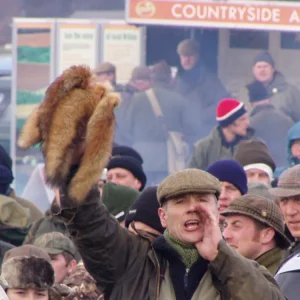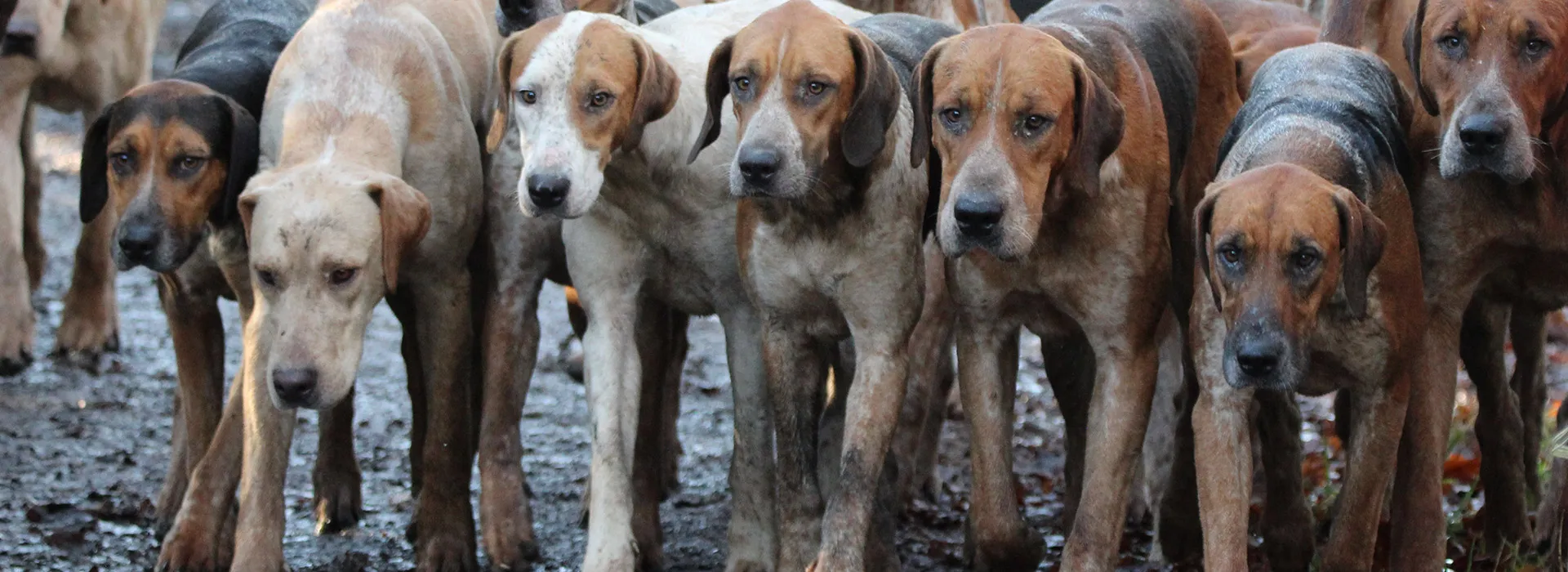Covert operations, infiltrating crime gangs, stakeouts… these are the tactics used by the RSPCA’s equivalent of the Special Branch. Rich Cookson joins a dawn raid.
It’s just before 7am and a team of seven police and RSPCA officers are crammed into the back room of a tiny rural police station in South Wales. In just over an hour’s time, they and two other teams will launch Operation Jubilee: simultaneous raids on three houses in South Wales to search for evidence of badger digging – a “field sport” that’s still common throughout the UK even though it’s been illegal for more than 30 years.
As snow falls outside, Ian Briggs, an investigator with the RSPCA’s secretive Special Operations Unit (SOU), starts his briefing. “On 16 January at High Woolaston in Gloucestershire, a group of six men were disturbed by police in the process of digging a badger sett,” he says. “A civilian witness observed one of the men with a shotgun and heard shots before police arrived. At the scene, police found a brown terrier running around and a dead badger tied to a tree.
“At 8am, we will execute a search warrant under the Wildlife and Countryside Act to obtain evidence of equipment associated with badger digging – nets, dogs, videos, pictures of that terrier and dead animals. We also want any information linking the people living at the three addresses. If any dogs are there that have recent injuries, the owner can be arrested; if there are no arrestable offences, we’ll ask him for a voluntary interview. It should be a straightforward job, but it obviously depends on how he reacts.”
The man who lives in the house Briggs is about to raid is the registered owner of a 4×4, which was spotted at the scene of the badger dig. All six badger diggers took off when the police arrived, but when the civilian witness tried to stop two of them getting away, they threatened him with a shotgun. No one was arrested, but the police gathered a substantial amount of forensic evidence from the scene and passed the details to Briggs.
If uniformed inspectors are the RSPCA’s bobbies on the beat, the SOU is its Special Branch, tasked with gathering intelligence and tracking down offenders in the battle against what the charity calls “serious, organised and commercial cruelty”. Established in 1977, members of the 12-strong team conduct extensive surveillance operations (sometimes covertly following vehicles for thousands of miles), infiltrate criminal gangs, cultivate informants and spend painstaking hours building cases against suspected offenders.
This raid is just the latest in a series of major anti-cruelty operations across the UK that have recently tackled dog fighting, the illegal transportation of racing greyhounds, cock fighting, the illegal wild-bird trade and the importation of extreme animal-cruelty films. “We are police trained in full mobile surveillance, police driving, and both static urban and rural surveillance,” says Briggs. “We’re also taught how to handle informants, which is probably the most sensitive part of the job, because of the risks involved for both them and us.” The RSPCA is now the largest private prosecution agency in the UK, bringing about 1,000 cases a year, and the SOU is often behind prosecutions of the most disturbing.
Shortly before 8am, a convoy of three cars leaves the police station. It’s a strangely undramatic scene – the house, less than three minutes’ drive away, is small and whitewashed, with a scruffy outbuilding to the right and shed out back. There’s a tidy garden with flowerbeds behind a small wall. Briggs knocks on the door. A squat, muscular man with a shaved head answers and lets them in. The rest of the team follows.
Meanwhile, a second SOU officer – who has requested anonymity – videos the search, while uniformed inspectors check the 4×4. The owner, who denies any involvement in badger digging, is asked to open an outhouse. Yet, while searching the 4×4, one of the uniformed RSPCA inspectors unearths a radio collar – commonly used for badger digging – and a number of coarse animal hairs. “Badger hair is very distinctive,” Briggs says as he studies it. “It has a ridge which you can feel when you roll it between your fingers. This feels as if it’s got a ridge to me, but obviously it’ll need to be checked by an expert.”
Briggs joined the RSPCA after he left the army and worked as a uniformed inspector for five years, as all members of the unit have to. “I’ve now been in the SOU for seven years, and I still have no idea what I’m going to be doing from one day to the next,” he says. He spent most of last week on a surveillance operation with the police in northern England. The week before, he was part of a team that raided a London pub at the centre of the illegal trade in wild birds. Inside, officers found more than 100 birds, mostly finches, and a substantial amount of bird-catching equipment – 13 men were arrested on suspicion of animal cruelty and other offences under the Wildlife and Countryside Act.
Each member of the unit co-ordinates work on particular areas, and Briggs is responsible, among other things, for badgers. Even though digging for the animals was made illegal by the Badger Act 1973 and their setts were protected in 1991, Briggs estimates that hundreds of people still go badger digging every week. Many of them argue that the badger is over-protected, and believe they are offering farmers and landowners a valuable service by getting rid of badgers for them. They are not alone in those beliefs – only last week, more than 300 vets called for a “strategic cull” of badgers to control the spread of bovine tuberculosis (TB). The vets, mainly from South-west England, the region worst affected by bovine TB, believe that badgers are responsible for passing the disease on to cattle. In a letter to the Environment Secretary Margaret Beckett, they expressed “despair” at the Government’s approach, but the Department for Environment, Food and Rural Affairs rejected their calls. The Government is expected to announce new plans for dealing with the disease sometime this week.
But Briggs believes the badger diggers’ motivation is more sinister. The attraction, he explains, is killing the badger and seeing how well the dog performs. “It’s a big thing if the dog is quiet when working in the sett. The owners will keep a tally of how many badgers or foxes each animal has done.” The badger is then shot or killed by the dog. He adds that, because it’s such a clandestine activity, it’s very difficult to catch the culprits, so the unit increasingly relies on forensic evidence to prove that laws have been broken.
Throughout the 1980s, the SOU expanded its remit from animal transportation to other forms of cruelty that are now a major part of its work. Mike Butcher is a former police officer who has worked for the unit for 21 years. “In the early Eighties, we were hearing things about dog fights, but it was very difficult to persuade our bosses that they were taking place,” he says. But in 1985, acting on a tip-off, SOU and police officers raided a barn in Potters Bar. They found two bull terriers still locked together in combat, both severely injured. They also discovered a dog-fighting pit and video recording equipment. Eleven people were prosecuted and convicted – it was the first successful prosecution for dog-fighting for almost 100 years
It was also the start of a lifetime’s work for Butcher. A second raid in Dewsbury caught more dog fighters; a third in Doncaster lead to 16 arrests – and by December 1991, RSPCA had obtained 193 dog-fighting related convictions. Butcher was the driving force behind the unit’s most recent animal-fighting drive – an 18-month investigation called Operation Gazpacho to disrupt the UK’s largest dog-fighting ring, that culminated in a raids across 10 towns and cities in December 2003. Seventy-three fighting dogs were seized, several of which had signs of fight injuries. Officers also confiscated scales, veterinary kits, treadmills for training the animals and so-called breaking-sticks, used to separate the jaws of dogs locked in combat. Nine prosecutions are still going through the courts.
Butcher may now be the UK’s top expert witness on dog-fighting, but he’s paid a heavy price for his work – he had his nose broken by a dog-fighter in a police station after one raid and has also received death threats. “Right from the word go we realised we were dealing with some very heavy people,” he says – dog fighters he has prosecuted have had previous convictions for drug dealing, possession of illegal firearms, burglary and assault.
“I’ve been doing dog fighting for 20-odd years now and it’s usually long, hard work. But all this time later, I’m still here, because I go home at night knowing I have made a difference. For Gazpacho, I spent 18 months gathering information on those addresses, but sometimes you get a lucky break – recently an inspector got a call about a cock fight and we put together a raid in six days. I don’t get shocked anymore, but I do get more and more curious and surprised about what we see. I’m still fascinated about why people fight dogs.”
Butcher and Briggs agree that by far the most disturbing case they have worked on was a so-called “squish” movie – something that Barry Fryer, the head of the SOU, described as “one of the most abhorrent instances of cruelty that our unit has ever come across”. The film depicted scenes of animal torture and involved mice, guinea pigs and a six-week old kitten being slowly being crushed underfoot. Working with the Metropolitan Police, the unit traced the people who had appeared in the film and discovered where tapes of it were being produced. In May 2002, Londoner Brian Patrick McCann, then 47 and of Kings Cross, was sentenced to two years imprisonment after pleading guilty to charges of conspiracy to produce and distribute obscene material. Four other people were sentenced for their involvement in making the video.
In South Wales, it’s shortly after 10am and the raid is just about finished. The inspectors pack the evidence into their van and drive back to the station. Briggs has been briefed about the other two raids and is satisfied with the morning’s work. “One of them raids didn’t find much, but they got three unlicensed shotguns at the other address,” he says. “What we’ve found here confirmed a lot of the information we had, and we’ve seized evidence that may provide further links. It’s as much as we could have asked for.”



